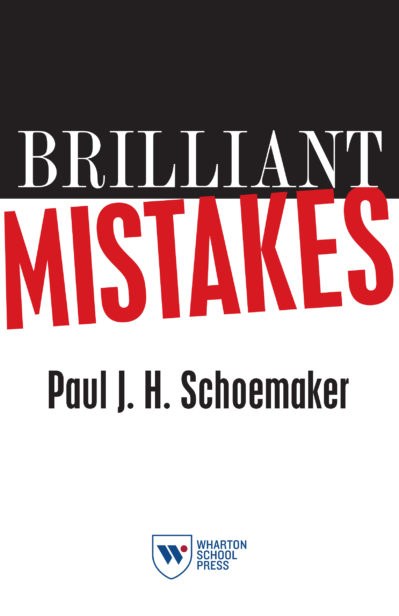There will never be a shortage of dumb mistakes. Fortune magazine once compiled a list of the “101 Dumbest Moments in Business” that included Merrill Lynch’s investment in subprime mortgages just before the market meltdown in 2008, Mattel’s recall of 20 million toys treated with lead paint in China and the fines a Rhode Island hospital faced for operating on the wrong side of a patient’s head for the third time in less than a year.
 Let us concentrate on mistakes of the more fruitful kind. The following framework can assist you in distinguishing different types of mistakes using simple cost-benefit analysis. This allows us to group mistakes into four types, with some illustrative examples:
Let us concentrate on mistakes of the more fruitful kind. The following framework can assist you in distinguishing different types of mistakes using simple cost-benefit analysis. This allows us to group mistakes into four types, with some illustrative examples:
Tragic mistakes, like a drug addition or car crash, exact a high price with little personal benefit and are to be wholly avoided.
Serious mistakes, like a divorce or a new venture failing, also have a high cost, but with the potential of a high benefit. These mistakes can provide tremendous lessons and may be valuable in retrospect, but we need to be careful about inviting them into our lives. You shouldn’t get divorced to see what you will learn; you don’t drive your business into the ground to taste the lessons of failure.
Trivial mistakes represent low cost and low reward. The results are not tragic, but the lessons learned are inconsequential or obvious — along the lines of “put more money in the meter” or “leave for the airport a bit earlier.”
Distinguishing between these types allows us to arrive at a more tangible definition of the truly brilliant mistakes — those that offer high benefits at a relatively low cost. The high benefits of brilliant mistakes typically accrue over the long run rather than being conferred at the instant of the error. This is part of what makes them difficult to distinguish from trivial, or even serious, errors. It would be tempting to look at this chart and determine, “Well, I guess I’ll try to make only brilliant mistakes, then!” The real lesson, however, is that these distinctions are often clear only in retrospect.
For example, some major flops in business only later turned into big successes, such as McDonald’s Hula Burger (1962), Apple’s Lisa (1983), Coca Cola’s New Coke (1985) or Corning’s DNA Microarray (1998). While it’s important to live and work within the boundaries of good sense (none of us wants to end up immortalized as the next Darwin Award winner), it’s also true that striving to eliminate all mistakes in our lives means that we risk sacrificing valuable ones as well. We need to allow some of the bad errors into our lives in order to have a decent chance of creating some brilliant mistakes as well. That is the challenge: how best to manage this trade-off based on your ambition and risk tolerance.
Editor’s Note: This post is adapted from Brilliant Mistakes: Finding Success on the Far Side of Failure, from Wharton School Press.



